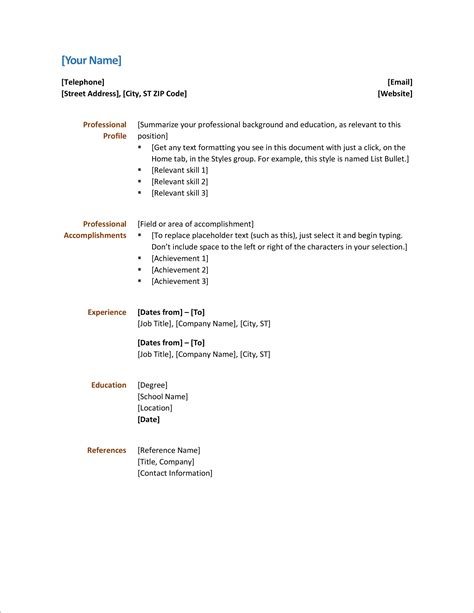Optimize your resume with traditional structure, chronological work experience, classic education & skills sections, and clear formatting for maximum impact. Perfect for job seekers!Are you in the market for a new job and feeling overwhelmed by the prospect of updating your resume? Look no further. In this blog post, we will explore the traditional resume format, also known as the “normal” resume format. This format is the most widely used and easily recognizable by potential employers. We will delve into the chronological order of work experience, allowing you to effectively showcase your career progression. Additionally, we will discuss the classic education and skills section, highlighting the qualifications that set you apart from other applicants. Finally, we’ll touch on the importance of clear and easy-to-read formatting, ensuring that your resume is visually appealing and easy to navigate for hiring managers. Whether you’re a seasoned professional or just starting out in your career, this guide will provide valuable insights to help you create a standout resume in the traditional format.
Traditional Resume Structure
In a traditional resume structure, the emphasis is placed on presenting your work experience in a clear and easy-to-read format. This means that your work history is typically listed in chronological order, starting with your most recent position and working backwards. By organizing your resume in this way, you are able to showcase your career progression and demonstrate the growth and development of your skills and expertise over time.
When it comes to the education and skills section of a traditional resume, it is usually placed after the work experience section. This allows the reader to first see your professional background and then move on to your educational qualifications and skill set. By following this structure, you are able to highlight your practical experience before presenting your academic achievements and competencies.
Overall, the traditional resume structure is designed to provide a clear and organized overview of your professional background. By following a classic and time-tested format, you can ensure that your resume is easy to navigate and effectively showcases your qualifications and experience to potential employers.
Chronological Order of Work Experience
Chronological Order of Work Experience
When creating a resume, one of the most common formats used is the chronological order of work experience. This format lists your work history in reverse chronological order, with your most recent employment first. This allows potential employers to quickly see your career progression and the most recent and relevant experience you have. Using this format can help highlight your career growth and show a clear timeline of your work history.
It’s important to start with your most recent job and work backwards, including the company name, position, and dates of employment. This format is great for those with a strong work history and progression, as it allows for a clear and easy-to-follow timeline of your experience. By using this format, you can showcase your career growth and development, making it easier for potential employers to see how your experience aligns with their needs.
One potential downside to this format is that it can emphasize any gaps in your work history, especially if you have had periods of unemployment. However, by including relevant skills, education, or volunteer work, you can fill in these gaps and show your continued growth and development. Overall, the chronological order of work experience is a classic and effective way to showcase your career progression and align your experience with the needs of potential employers.
Classic Education and Skills Section
When it comes to creating a classic education and skills section for your resume, it’s important to highlight your academic background and relevant abilities in a clear and concise manner. This section is typically placed after the work experience section and provides employers with valuable insight into your qualifications and capabilities.
Start by listing your education in reverse chronological order, beginning with your most recent degree or certification. Include the name of the institution, the degree or program completed, and the date of graduation or completion. If you have a high GPA or academic honors, be sure to mention them as well.
After detailing your education, it’s time to showcase your skills and qualifications. Include both hard and soft skills that are relevant to the position you’re applying for. This could include technical skills, language proficiency, project management abilities, or leadership qualities. Use strong keywords to emphasize your proficiency in these areas, and consider providing examples of how you’ve utilized these skills in previous roles.
Clear and Easy-to-Read Formatting
When it comes to creating a resume, clear and easy-to-read formatting is essential. Employers are often busy and may not have time to decipher a cluttered or confusing resume. A well-organized and visually appealing resume can make a strong first impression and increase the likelihood of landing an interview.
Utilizing bold and italic formats can help to highlight key information such as job titles, company names, and educational achievements. Bullet points can also be used to clearly showcase skills and accomplishments, making it easier for employers to scan the resume and quickly identify relevant qualifications.
Additionally, using a simple and professional font, adequate white space, and consistent formatting throughout the document can contribute to a polished and easy-to-read resume. Clear section headings and a logical flow of information can further enhance the overall readability of the document, ensuring that important details are not overlooked.
